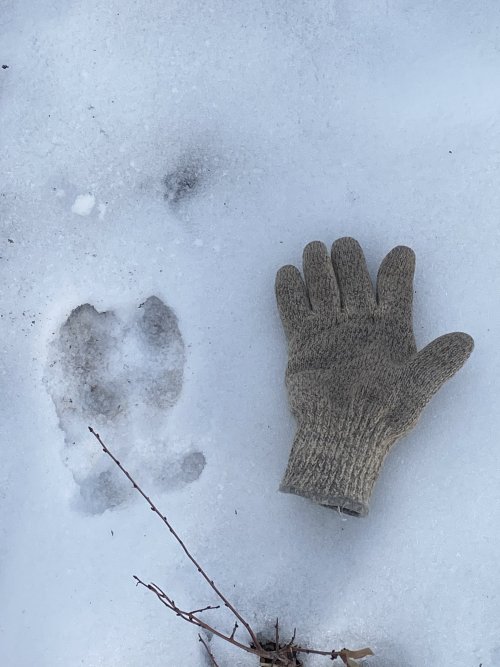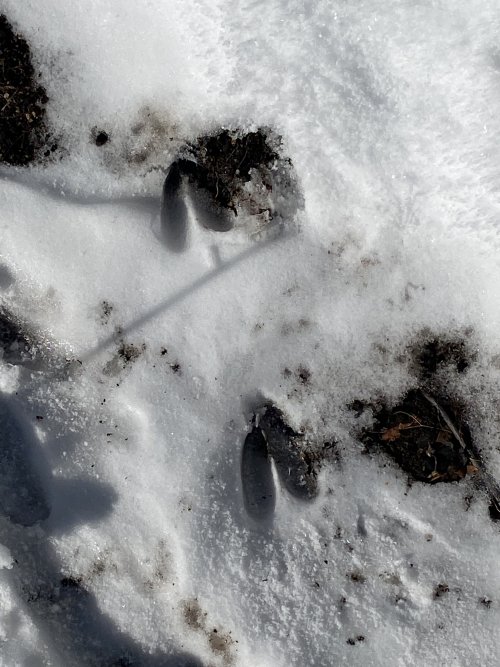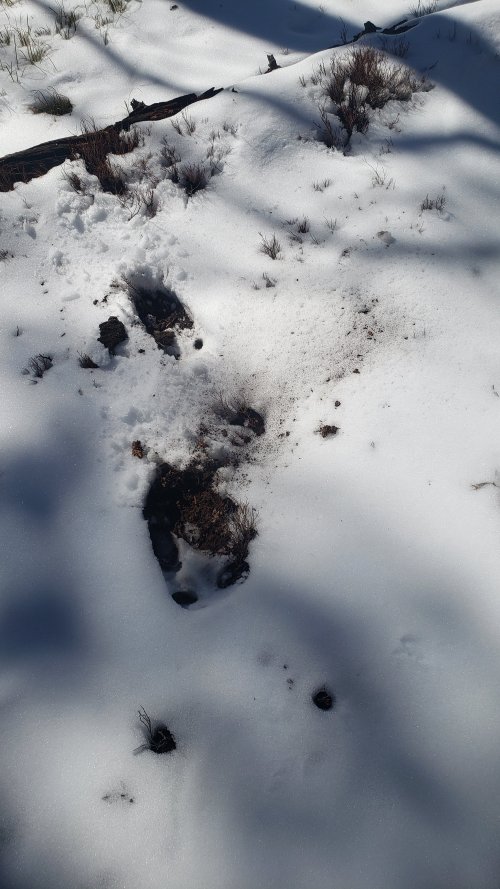windymtnman
Active member
- Joined
- Sep 17, 2014
- Messages
- 484
So, I've been trekking around the National Forest, which has about 4" of fairly new snow. Obviously, I pay attention to the ground sign, and try and evaluate what's fresh and what's not so. With temperatures down below 22 degrees at night, everything is frozen. I'm running into snow that's been crusted where the Sun warms it, and sugar snow where the Sun has no effect on it.
In looking at some Elk tracks yesterday, I was often seeing clear hoof prints with ice in the print. One might think they are NOT fresh tracks. Then I got to thinking about that. I have horses, mules, and burros. I can tell you that in zero weather, the sole of a horses hoof is quite warm. The laminae tissues in their hocks and hooves are blood engorged tissues. and I've put my hand on a horses sole, and could feel the warmth in them in cold, Winter weather. They often build up ice clods on them where the ice adheres to their hooves because it builds up. It's not unusual to take a hammer and knock 3" of ice off their hooves. (They thank you for this).
That got me to thinking is this the same for Elk and Deer? Could a Elk or Deer have equally warm hoof soles that when in contact with snow, actually leave a melted print? Obviously a walking animal's foot isn't in contact long but I've seen ice in tracks that aren't in areas where the Sun later created the ice in the track.
Point being, is a track with ice in it necessarily old? Interesting to consider, because you can also see very fresh tracks that don't have ice in them too.
Okay everybody, tell me I'm completely wrong now! Hahahaha
In looking at some Elk tracks yesterday, I was often seeing clear hoof prints with ice in the print. One might think they are NOT fresh tracks. Then I got to thinking about that. I have horses, mules, and burros. I can tell you that in zero weather, the sole of a horses hoof is quite warm. The laminae tissues in their hocks and hooves are blood engorged tissues. and I've put my hand on a horses sole, and could feel the warmth in them in cold, Winter weather. They often build up ice clods on them where the ice adheres to their hooves because it builds up. It's not unusual to take a hammer and knock 3" of ice off their hooves. (They thank you for this).
That got me to thinking is this the same for Elk and Deer? Could a Elk or Deer have equally warm hoof soles that when in contact with snow, actually leave a melted print? Obviously a walking animal's foot isn't in contact long but I've seen ice in tracks that aren't in areas where the Sun later created the ice in the track.
Point being, is a track with ice in it necessarily old? Interesting to consider, because you can also see very fresh tracks that don't have ice in them too.
Okay everybody, tell me I'm completely wrong now! Hahahaha







